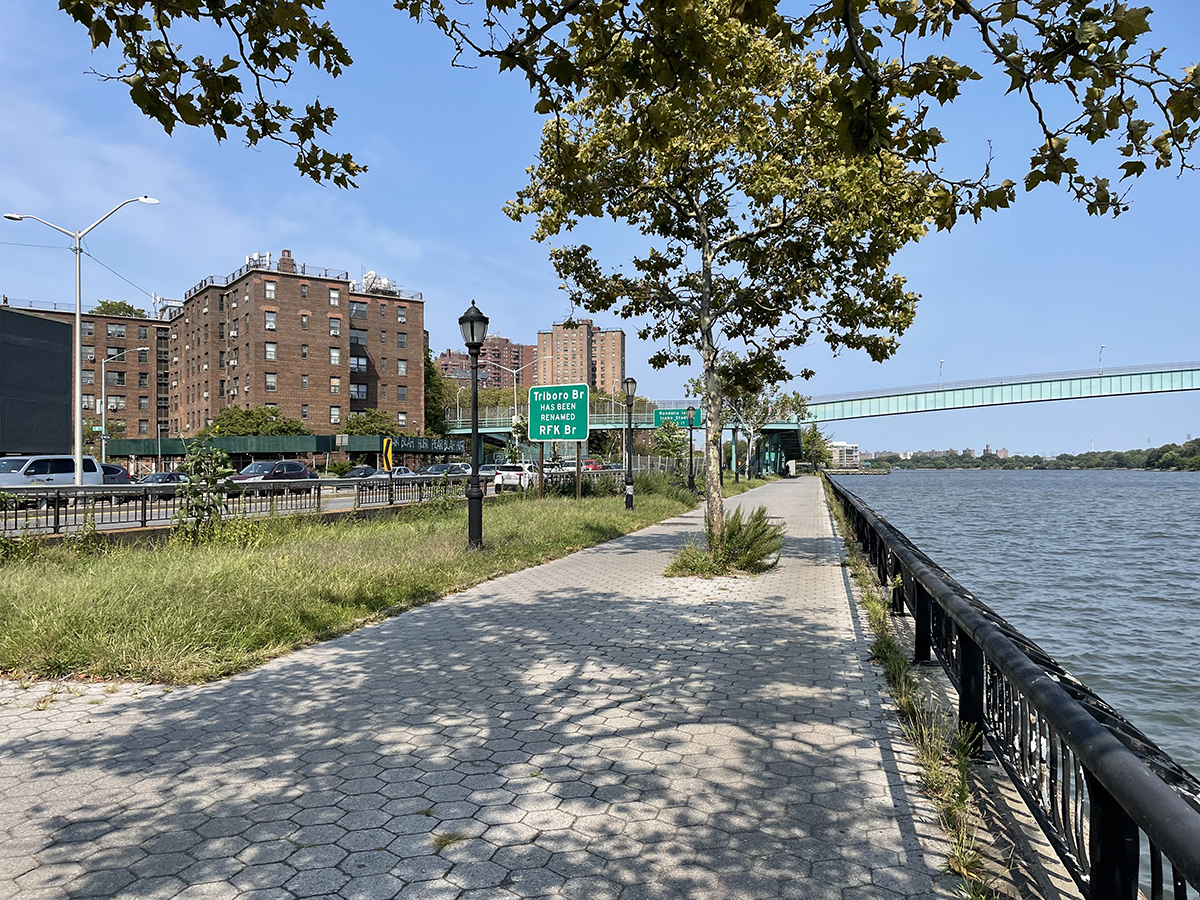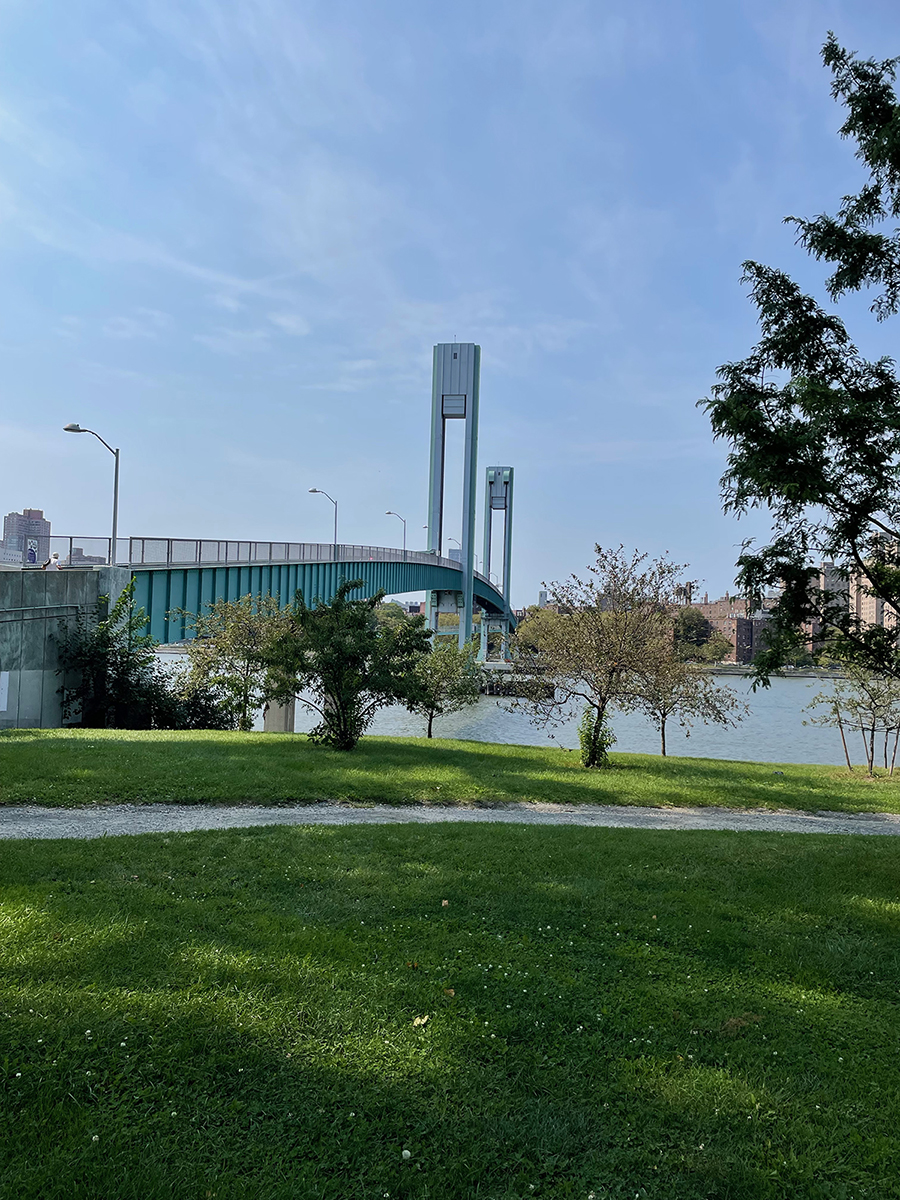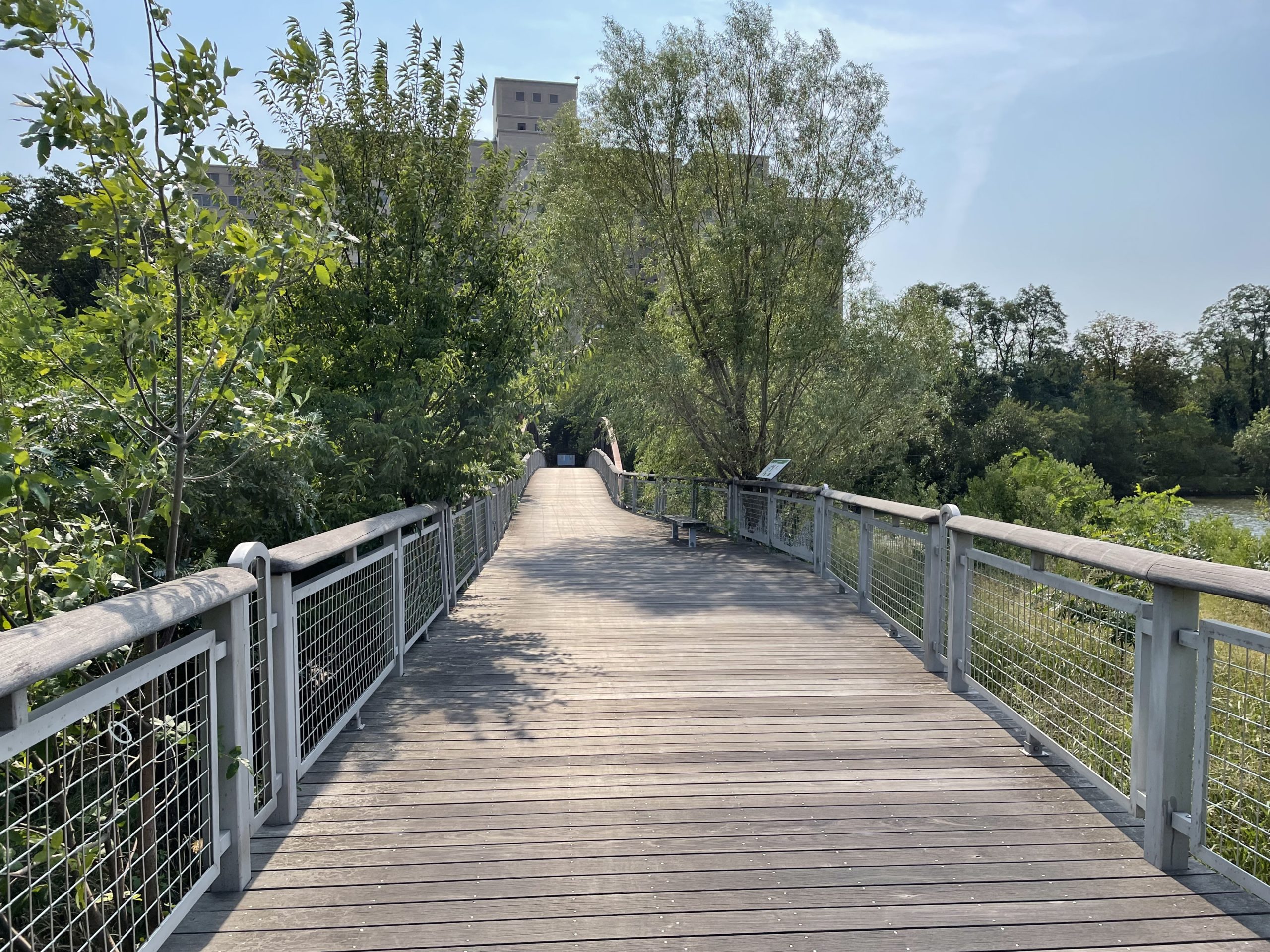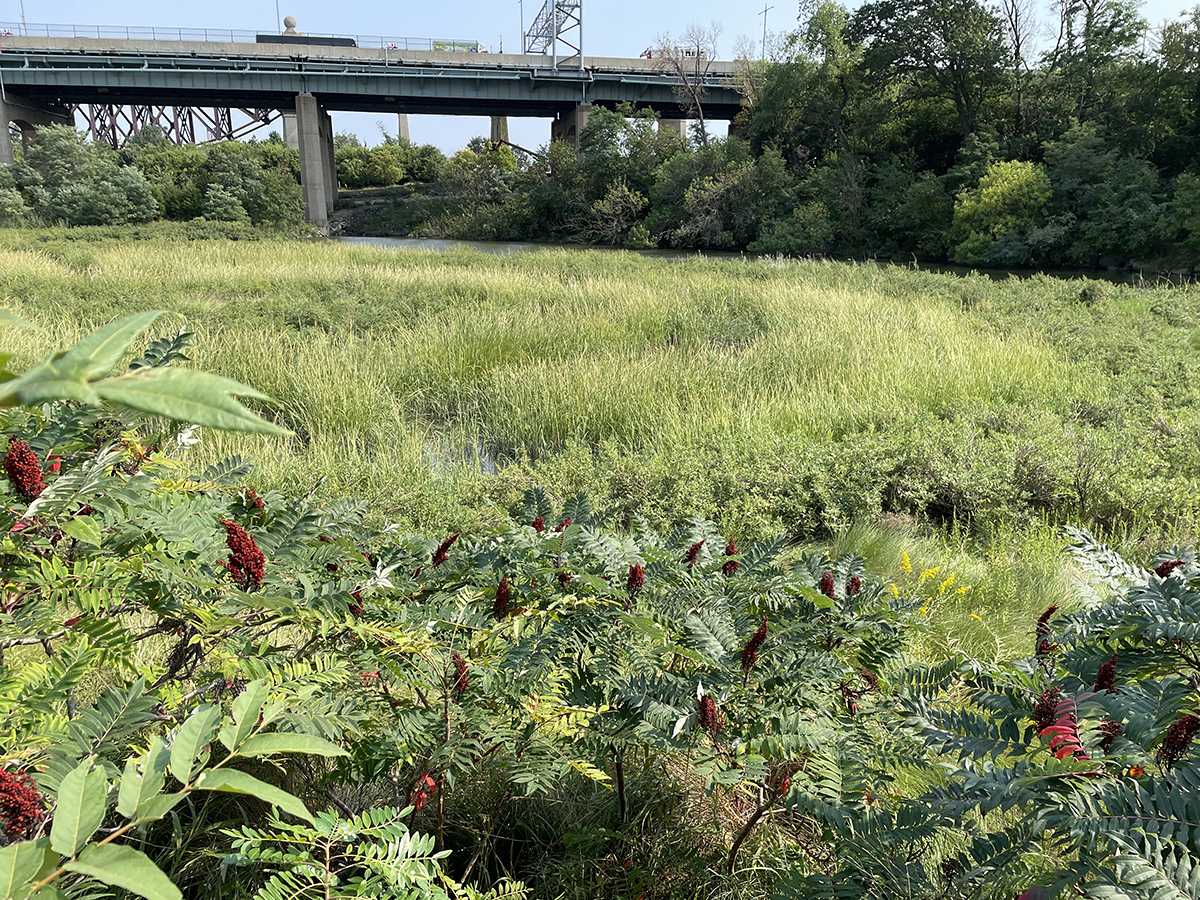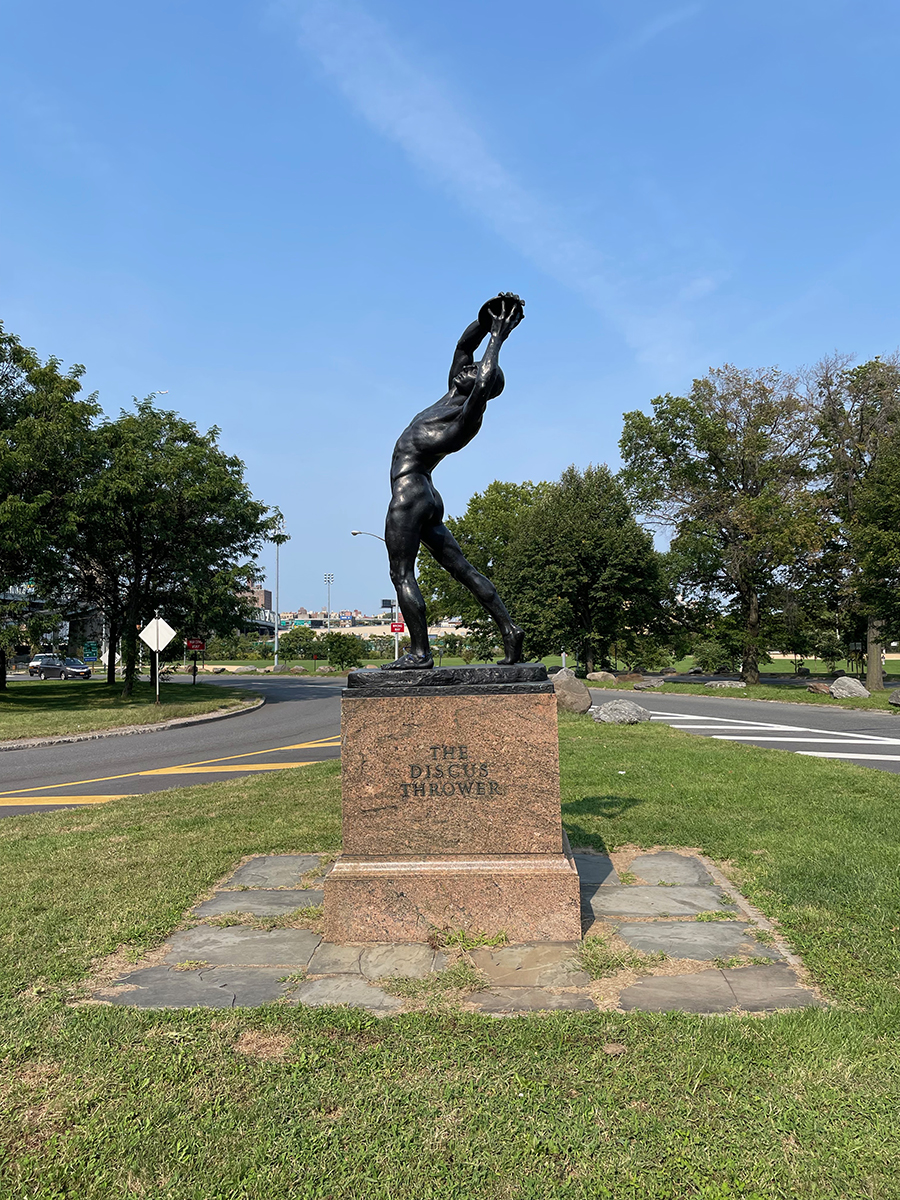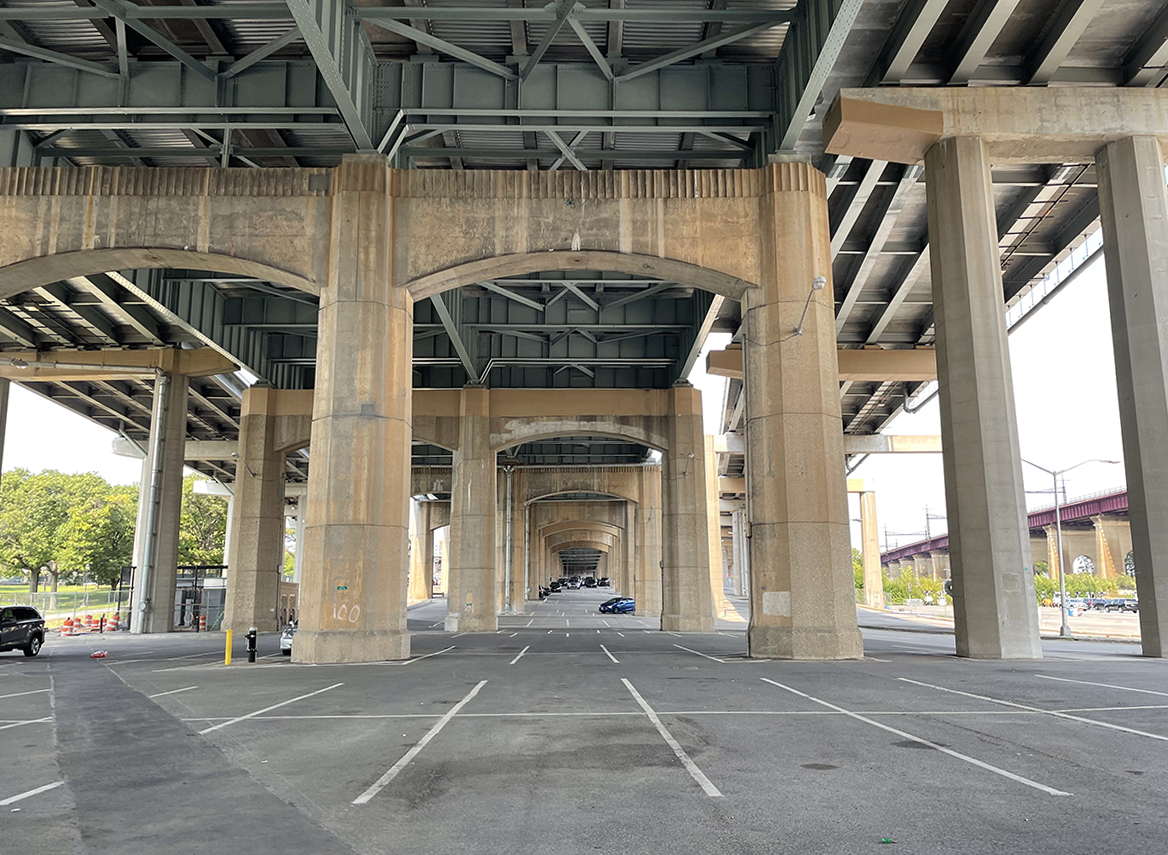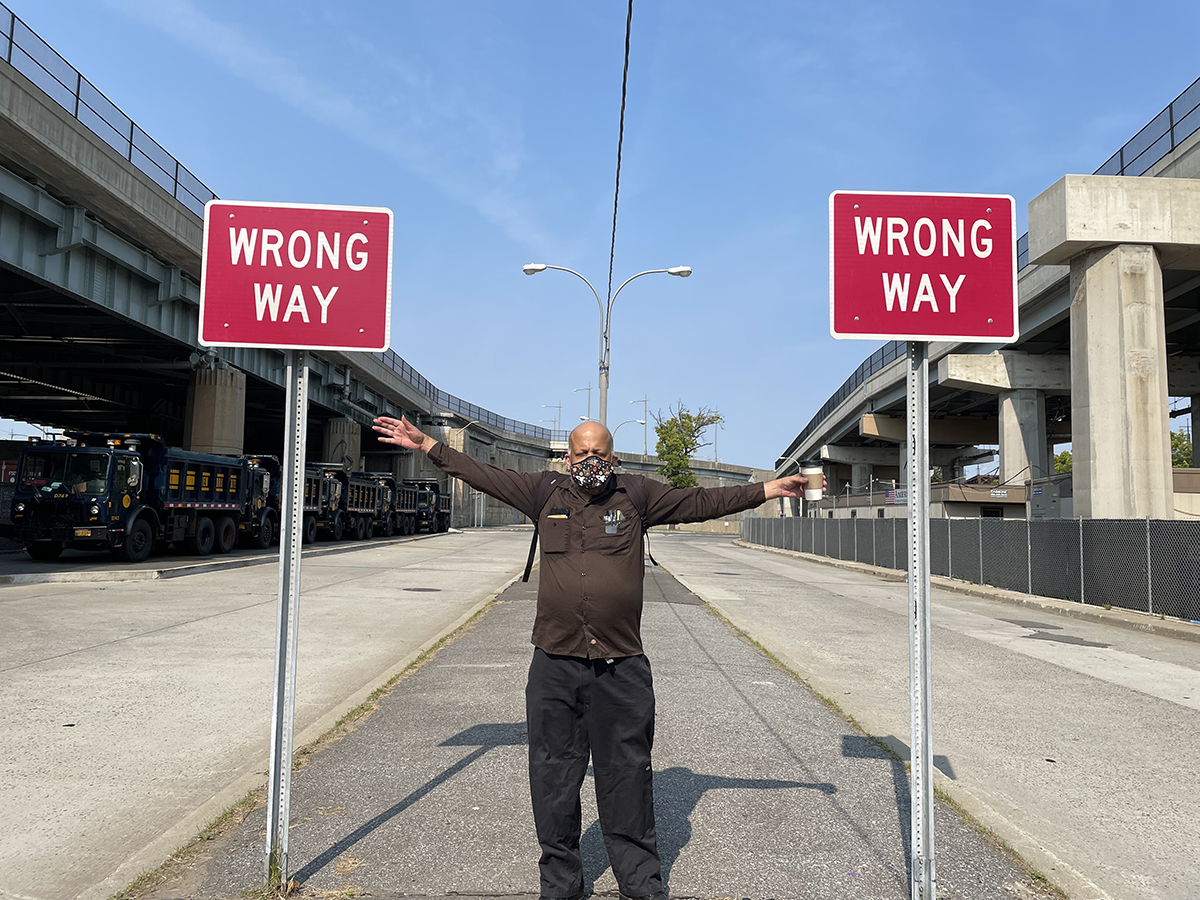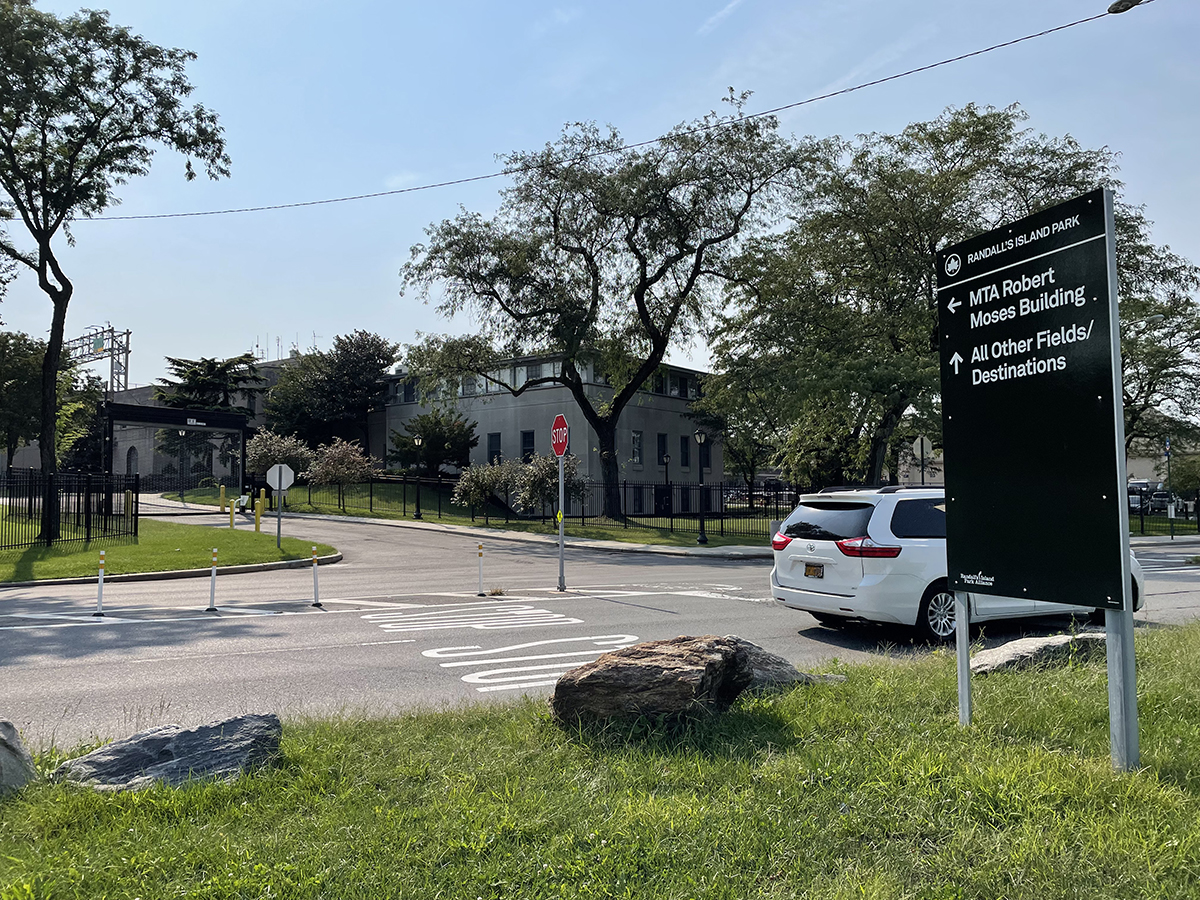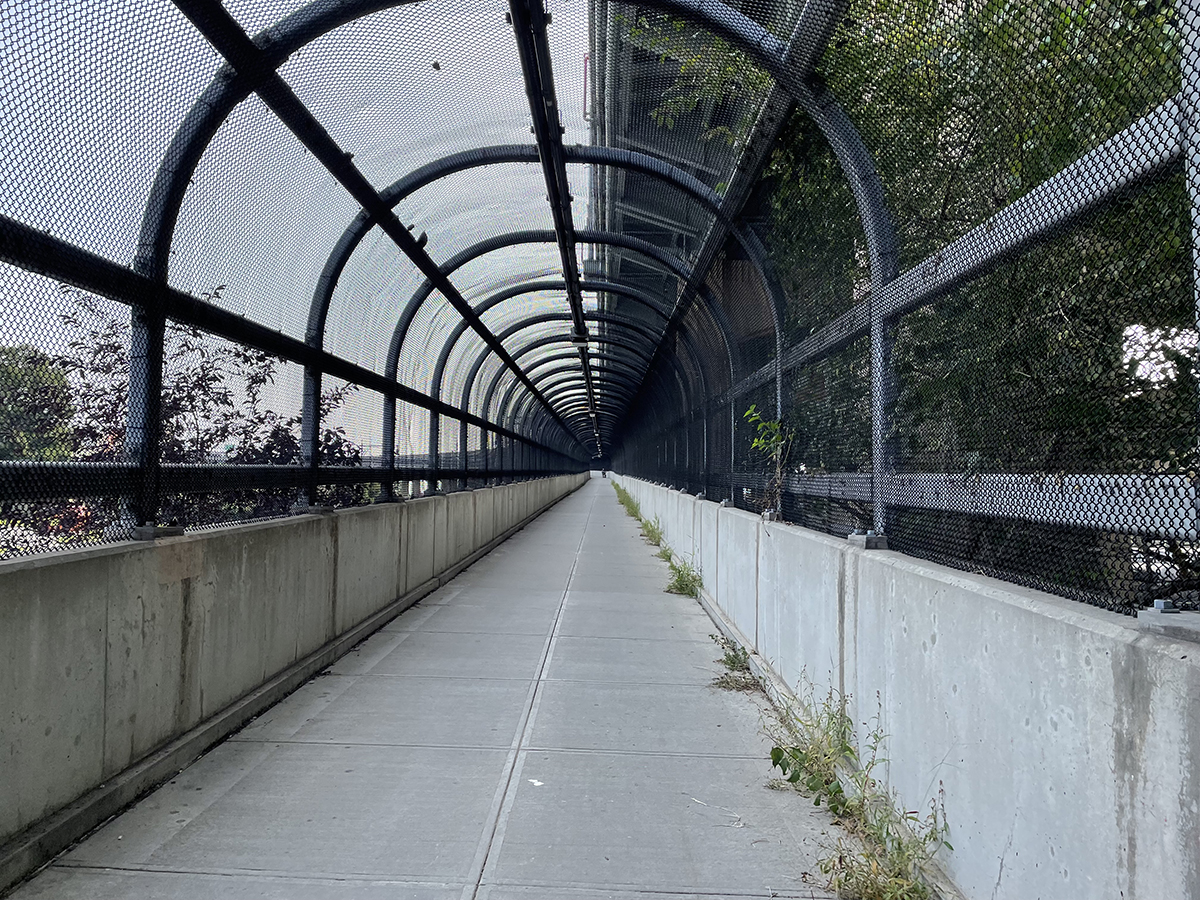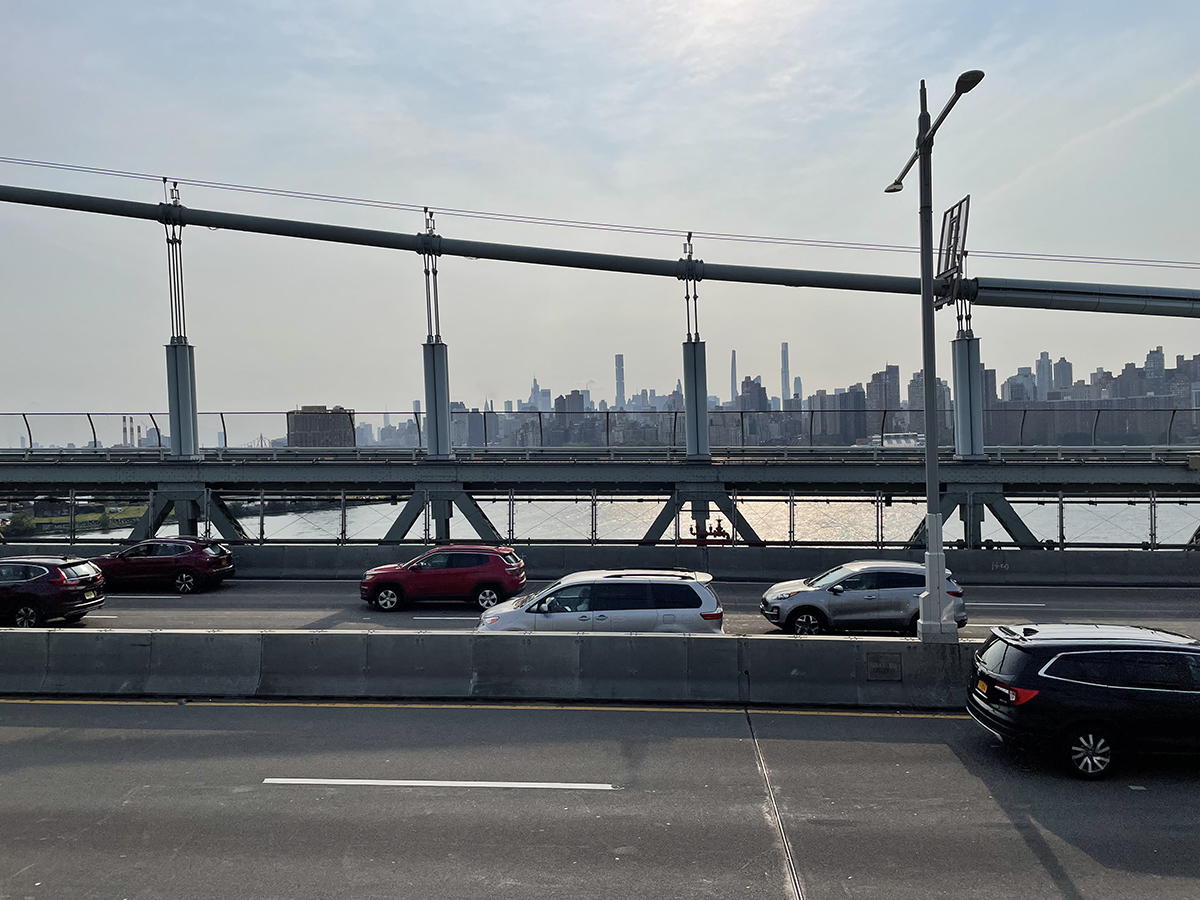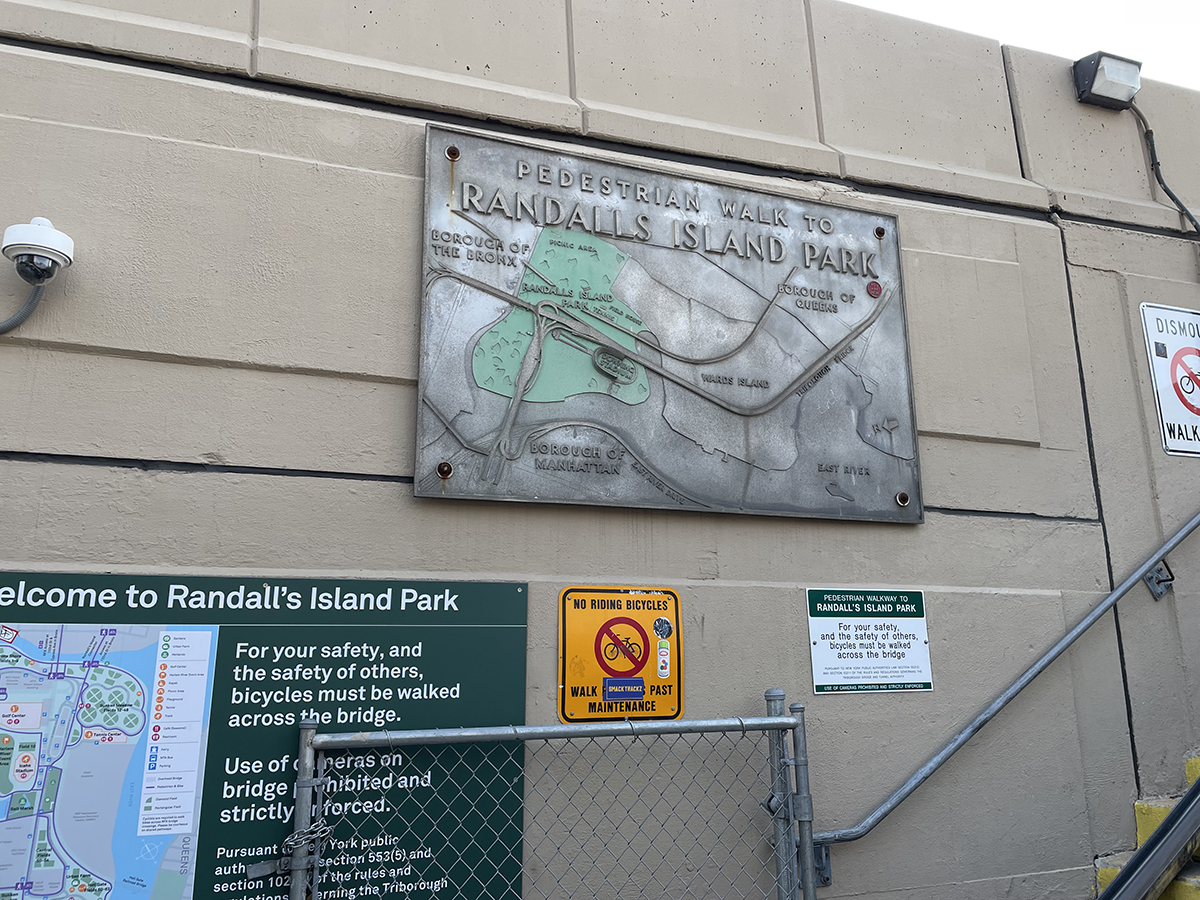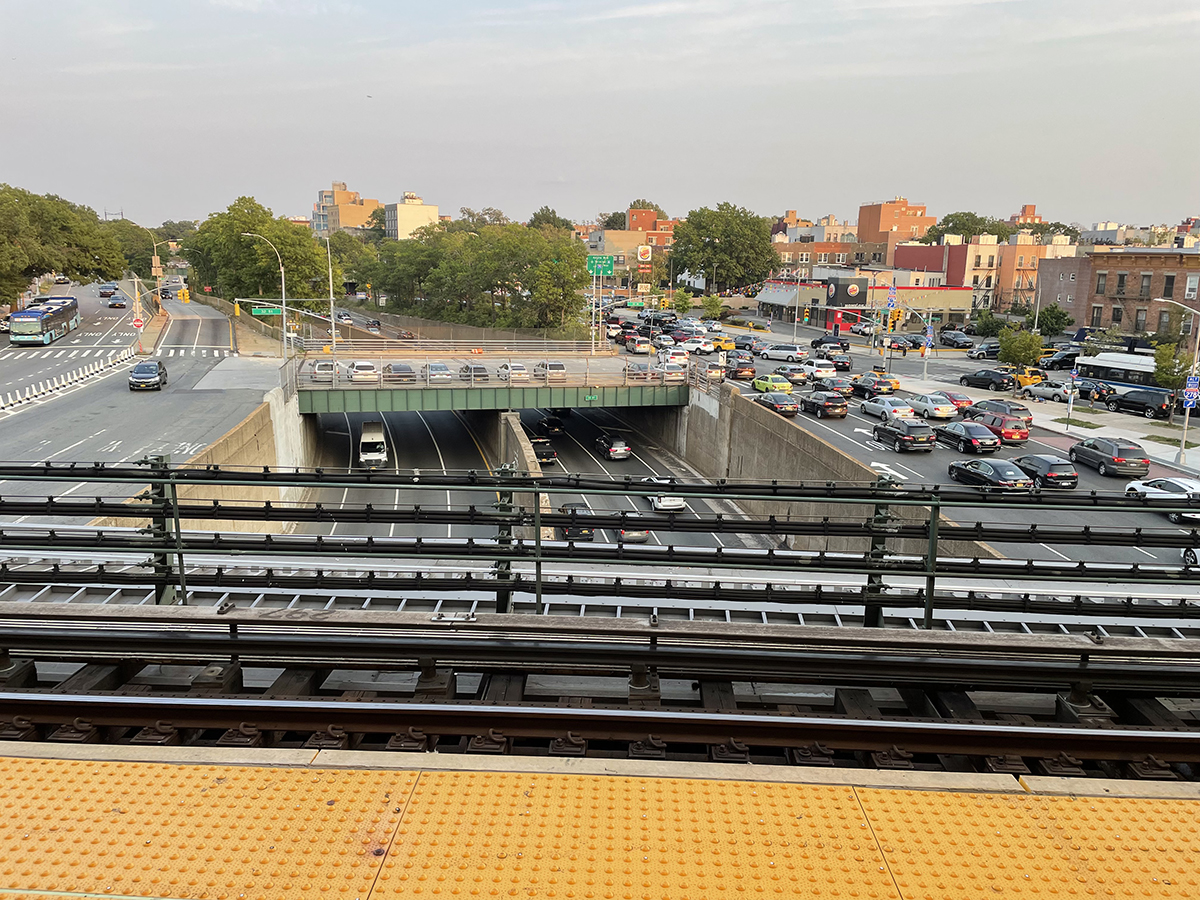I’ve been working on the last pamphlet of three in a series on parkways. This past fall I started researching/walking the Grand Central Parkway, a 14.61-mile highway that starts at the Triborough/ RFK Bridge on the western edge of Queens and runs all the way through to the Queens/ Nassau County border. This is the kind of project I needed to break up into smaller parts, since you can’t really walk the entire length of the parkway in one go. I decided to start at the beginning, the bridge that leads into Queens and feeds into the parkway.
There’s a pedestrian bridge from the east side of Manhattan that gives access to Randalls and Wards Islands, two bits of land that used to be separate but are now joined together by landfill.
There’s all kinds of exciting things to see here, marshes and parkland and an urban farm, sports fields, music festivals in the summertime, a waste water treatment plant, and a maximum security psychiatric facility, all of the various things you might find on one of the minor islands of the New York City archipelago.
We tried to walk to the former headquarters of Robert Moses, the urban planner who built the RFK bridge and the Grand Central Parkway, the head of the Triborough Bridge Authority, whose toll plaza gathered the funds that drove development throughout the city.
Walking there proved to be difficult. Which is fitting, really.
Eventually we avoided the highway and got there.
Then from the south end of Wards Island there is a pedestrian access path to the RFK Bridge, which leads into Astoria, Queens.
The pedestrian path is relatively less well known and traveled over than other bridge paths over the East River. It has these expansive views of Astoria, Randall’s Island ball fields, the East River and the nearby Hellgate railway bridge. But there’s no fencing for most of it, just a low four-foot railing, which means anyone prone to vertigo should probably avoid it.
If you enjoy that edge of terror and excitement you get to see something beautiful you wouldn’t see otherwise. Infrastructure nerds will love it.
Towards the end of the path on the Queens side is a suicide prevention emergency phone; four people since 2015 have jumped to their deaths here. There’s a staircase at the end of the path that takes you to the base of the bridge.
In Astoria the bridge feeds into the BQE and the Grand Central Parkway, which overlap for a bit before splitting into two separate highways. We stopped our walk here for the day and planned to start again on the next section the following week.

